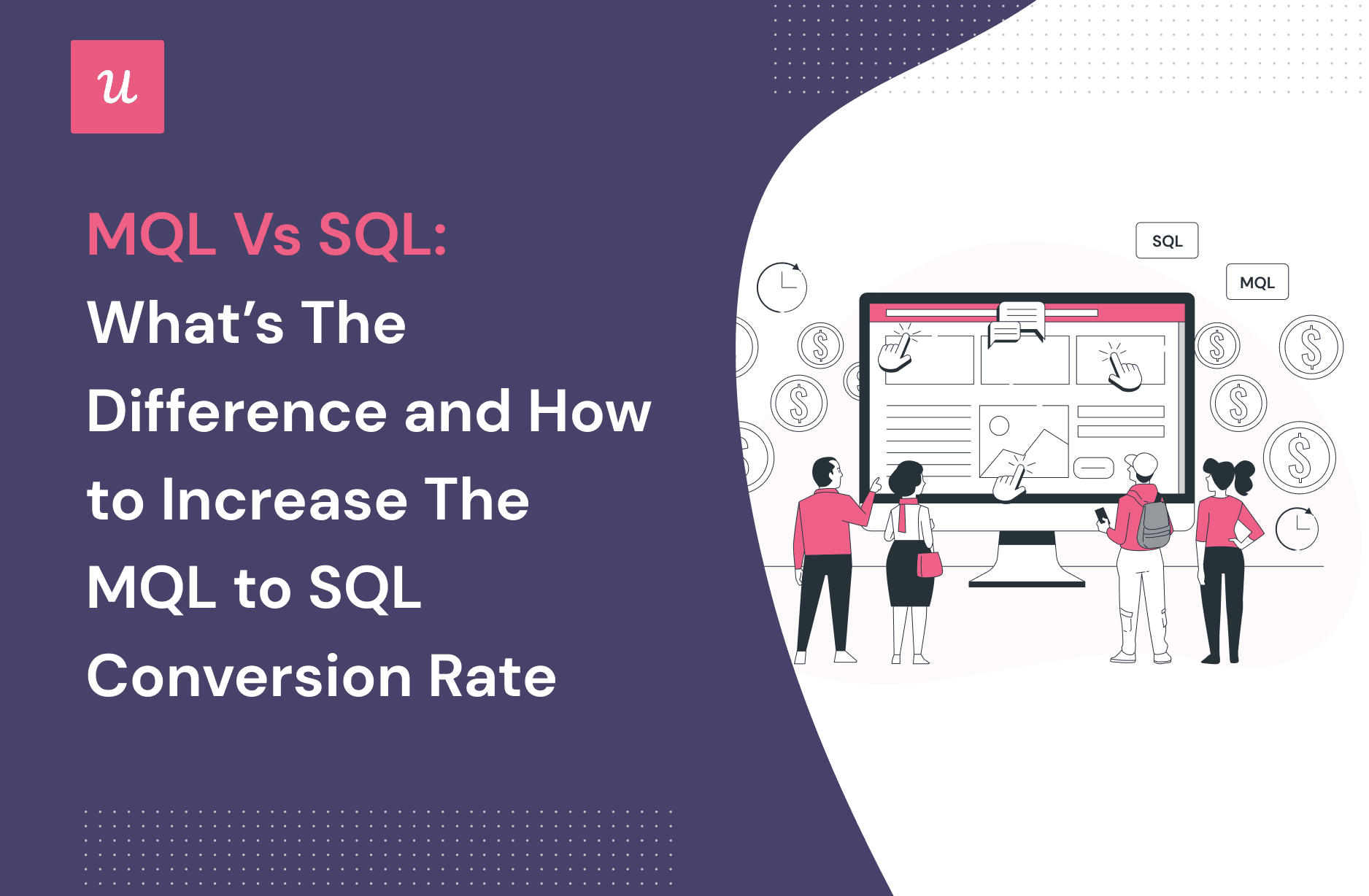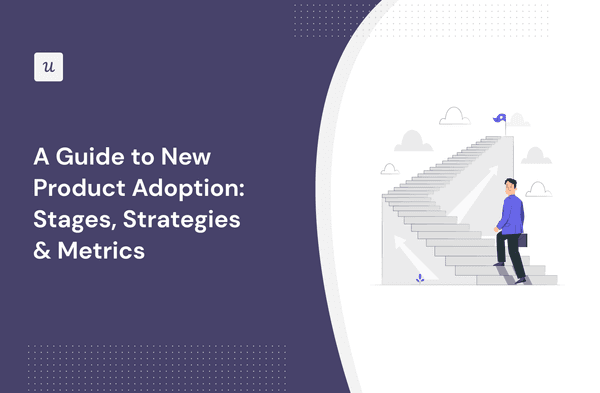
Every SaaS business wants qualified leads. But what should you do once you have them? That’s where you need to understand the difference between MQL vs SQL.
They are both leads, but really understanding the nuances can help you scale your product growth efficiently.
In this article, we’ll go over our best tips on how to better qualify your leads and optimize your marketing and sales strategy. Let’s dive in!
Try Userpilot Now
See Why 1,000+ Teams Choose Userpilot

What is a marketing qualified lead (MQL)?
Marketing qualified leads (MQL) are essentially site visitors who are likely to become customers. In other words, an MQL fits your buyer persona and thus, is a prospective customer.
However, MQLs are situated at the top of your sales funnel. So they are still not ready for direct attention from your sales team.
What is a sales qualified lead (SQL)?
The sales qualified lead (SQL) is a prospect your sales team has identified as being worth pursuing. The next stage in the sales process for SQLs is a direct sales push.
SQL contacts are situated near the bottom of the sales funnel. So they have an intent to buy and meet the necessary criteria that make them a good fit for your product or service.
MQL vs SQL: What’s the difference?
An MQL is a lead situated near the top of the sales funnel. But they lack the intent to buy, so you require more effort from the marketing team before the sales team can push them for a direct sales offer.
An SQL, on the other hand, is already in the buying cycle and ready for a direct sales offer. Both the sales and marketing teams have deemed them to be potential buyers. As a result, they should be your priority when managing leads.

How to calculate the MQL to SQL rate?
The MQL to SQL conversion rate calculation is so simple, and all you have to do is to follow these straightforward instructions.
First, you need to identify the number of MQLs and SQLs generated for a particular period. All you have to do is divide the number of SQLs generated by the number of MQLs generated in that period and then multiply it by 100 so that the ratio is expressed in percentage.
For example, if you generated 1000 leads in a quarter-long sales campaign and then managed to convert 500 of them into sales, your MQL to SQL rate would be (500/1000)*100% = 50%. This means that on average, you manage to convert 5 out of 10 leads into sales.

What is a good MQL to SQL rate?
Data from Salesforce show that the average MQL to SQL conversion rate is 13%. Of that, only 6% of the SQLs actually convert to deals.
Do note that employee and customer referrals are the highest-performing channels for lead to deal conversions, followed by the company website and social media.

How do you differentiate between MQL and SQL?
There is a significant gap between the MQL vs SQL designations. Studies show that less than 10% of MQL ever convert to SQL, which happens because many SQLs get classified as MQL too early.
Here are four factors that you should look out for when differentiating between MQL and SQL:
- Lead behavior
- Lead score
- Types of conversion
- Referral channel
Lead behavior
Lead behavior includes how visitors behave on your website and how they engage with your team. Users who visit your website repeatedly and browse through your products are interested in your company.
So, you can categorize them as MQLs and SQLs depending on the pages they visit, how long they spend on the site, and how often they return.
Lead score
Lead scoring is a widely used method for differentiating between MQL and SQL. Before lead scoring was implemented, sales teams relied on gut feelings to determine MQL vs SQL designations. But using memory or feelings is an ineffective way to evaluate sales opportunities.
Lead scoring relies on data from both sales and marketing teams to assign weights to each action a visitor takes. As a result, you get quantified leads that can help you assign better MQL vs SQL designations.
Type of conversion
Conversions can be categorized just like leads. For example, someone who downloaded a free eBook would be an MQL. On the other hand, someone who requested a free demo of your product would be an SQL.
The general rule of thumb is that the more effort a contact puts into interacting with your campaign, website, and product, the more likely they will be classified as SQL.
Referral channel
Most Saas businesses have multiple channels to acquire leads. But you might notice that the majority of the leads come from a select few, like email and paid marketing. Over time, you’ll be able to identify the more effective channels with a high lead conversion count.
Since all engagements with clients are opportunities to make sales, leads that come through such referral channels will naturally get priority. As a result, you can differentiate MQLs and SQLs from their referral channel.
How to increase MQL to SQL conversion rate?
A company’s MQL to SQL conversion rate is directly related to its close rates. So any company would be looking for ways to increase their MQL to SQL conversion count. But how exactly can they do this?
Here are some tips for anyone looking to convert more MQLs into SQLs:
- Determine the reasons for the low MQL/SQL conversion rate
- Send personalized lead nurturing emails
- Equip your sales team with success stories
- Collect feedback from your existing clients
Now let’s take a deeper look at these suggestions.
Determine the reasons for the low MQL/SQL conversion rate
To improve your MQL to SQL conversation rate, you will first need to identify the reasons behind the low lead conversion count. Start with asking yourself the following questions:
- Why are your MQLs not converting?
- What do you think is preventing your MQLs from purchasing your product?
- Does it have to do with your service/product, price, or the quality of leads?
A good place to start is looking into why your MQLs fail to generate sales. There might be a problem with the way your marketing and sales departments classify MQLs and SQLs. Whatever the case, you can expect higher lead conversions once you make the necessary improvements.
Next, you should look at the obstacles that prevent customers from purchasing the product. Are you targeting the right audience? Is the pricing too high? Are there issues in your product/service that you may have overlooked?
Make sure you check for these issues from time to time to understand where the problem lies.
Send personalized lead nurturing emails
Personalized lead nurturing campaigns can help you manipulate buyer behavior. Email marketing campaigns usually have a high impact on potential customers, and they are easy to automate.
Email automation allows marketing teams to schedule various high-impact campaigns for potential customers. These include welcome, educational, promotional, and renewal campaigns. Based on user interaction, new subscribers will automatically receive these emails from time to time.
The most significant advantage of lead nurturing emails is that they offer personalized content. When a company notifies leads about offers and giveaways, they feel like the company is invested in them.
As a result, they are more likely to trust them and make a purchase. In fact, stats show that companies that automate lead management see more than a 10% increase in revenue in the first 6-9 months.

Equip your sales teams with success stories
When your prospects are down to their last few options, and you are one of the options they are considering, you can get their opinions in your favor by showing off the success stories of your existing customers.
Your marketing team is probably already talking about these stories in their campaigns, but your sales team must have full access to them and use them. That way, prospects will feel more assured about choosing your product or service over your competitors.

Collect feedback from your existing clients
Effective feedback is perhaps the most valuable resource for growth. So it is a good idea to get feedback from your existing clients on why they chose your product and whether they would recommend it to others.
One of the most effective ways to get feedback is through NPS (Net Promoter Score) micro-surveys. NPS surveys use a 1-10 scale to determine a customer’s loyalty to a product or service.
A score of 9-10 indicates that the customer is a “promoter”, i.e., someone who’s likely to spread positive word-of-mouth and refer your product to others. 7-8 is for “passive” customers, who’d stop at using your product – nothing more, nothing less.
Finally, 0-6 indicates “detractors” or dissatisfied customers who may even discourage others from using your product.
Using Userpilot, you can better understand user behavior analysis and boost in-app engagement through onboarding experiences and quantifying user sentiment, which includes NSP micro-surveys. In fact, with Userpilot’s new mobile capabilities, customers can now trigger their existing & new NPS surveys directly on their mobile devices, effortlessly gathering these valuable user insights on-the-go.
You can use the data you collect from Userpilot to segment your target audience and launch follow-up experiences to address the issues within your product. Eventually, this simplifies feedback collection by miles.

Conclusion
Understanding the differences between MQL vs SQL is crucial to your marketing and sales strategies.
Using lead intelligence and lead scoring to methodically designate your leads will allow you to personalize your sales strategy. So we highly recommend you utilize the proper tools when making MQL vs SQL designations.
Need help with understanding user behavior and analyzing customer feedback? Get a Userpilot Demo and chat with one of our product specialists!







